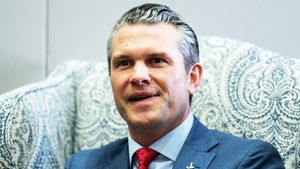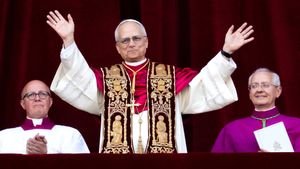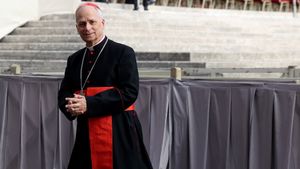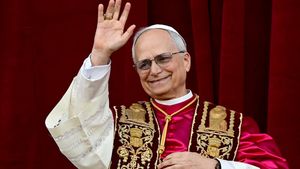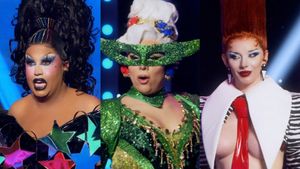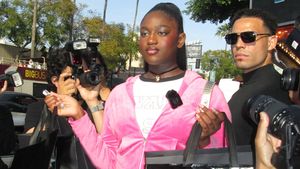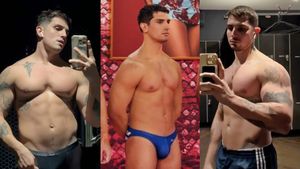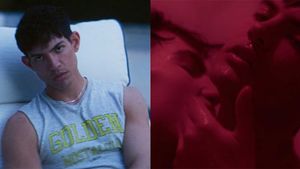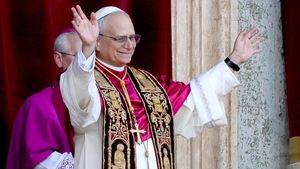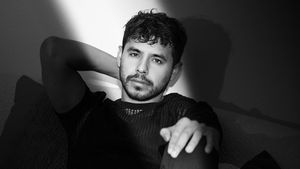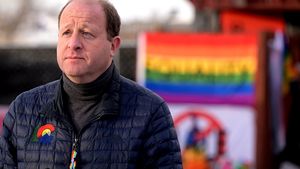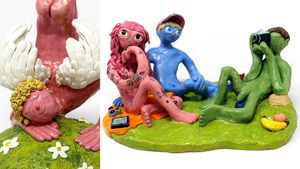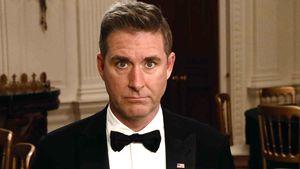I am here to advocate for the political efficacy of guacamole.
No, the guacamole isn’t being stuffed into a cannon and shot at close range into Steve Bannon. It doesn’t need to be well-read in intersectional activism or picket the White House alongside Leslie Feinberg. And, as Antoni Porowski in Queer Eye proves, the guacamole doesn’t have to be particularly good, either. As long as it brings LGBT and non-LGBT people together, I believe guacamole can change the world.
Wait, what?
I’m talking about Netflix’s Queer Eye, the 2018 reboot of Bravo's Emmy-winning, makeover show Queer Eye for the Straight Guy. Like the original (which premiered in 2003), the reboot follows five gay men as they make over the life of hapless straight men (and, in this season, one gay one), revamping his fashion choices, cooking skills, home decor, and more. (If you haven’t binged it yet, do. It’s a big, gay bash.)
But the LGBT community is a harsh mistress. As soon as the show came out, LGBT publications vacillated between lauding the show and raking it over the coals. There has been particular controversy over episode three, entitled "Dega Don't," in which the Fab Five rescues Corey, a Trump-supporting police officer. There are a couple moments of culture shock over the course of the episode; early on, Corey’s friend pulls a traffic stop prank designed to throw the Fab Five for a loop (Karamo, the only African-American member of the group, was the driver at the time), and, once Corey’s stash of Trump pickets is unearthed by the gays, their make-over-ee jokes that Trump will "Make America Great Again."
Later in the episode, Karamo has a heart-to-heart with Corey, in which they agree that the "tension" between the police and African-American communities can be solved once we all begin to listen to each other. At the end of the episode, Karamo shares how "that ride changed my life and my heart."
I was not the only viewer who felt this episode resolves the centuries-old ire between racial minorities and law enforcement a little bit too neatly. This conversation is a form of advocacy in the same way that smiling at a bird could be considered animal liberation. In an America where a new wave of Trump-emboldened, alt-right ideology is accumulating a body count—including openly queer people—any advocacy short of militancy falls short. At best, this episode felt "both-sides-ish." At worst, it made the Fab Five seem complicit in the political structures that are working to roll back the rights of LGBT people and are helping erode public acceptance. There’s something about the POTUS joking that his second-in-command wants to murder every queer American that makes me think heart-to-hearts are not enough.
However, I will stick out my neck for Queer Eye. Not because I agree with its ostrich-headedness when it comes to tricky political situations. While Queer Eye may not be the show that shakes our understanding of gender and makes the walls of homophobia come tumbling down, there are other, more subtle forces at work here. Ones that make it one of the most valuable LGBT shows on air.
Let’s start with the purpose. What is this show about? If the opening credits are to be believed, this reboot picks up where the original left off, this time fighting for acceptance instead of just begrudging tolerance. However, I don’t think this is necessarily true. While New York served as the backdrop for the original series, the reboot has the Fab Five trek into the heart of Georgia, braving corners of America underrepresented in mainstream media. These are the parts of America that fear being forgotten, whose rage at stagnant wages proved fertile soil for Trump’s anti-immigrant, America-first invective. There is no doubt in my mind that this new Fab Five is still fighting the same fight as their predecessors, only, in a place where the stakes are much higher. The goal is not to develop tolerance into acceptance, but to close the tolerance gap in the rural parts of America from which queer people tend to flee.
And how does this new generation foster tolerance? The same way the first generation did: by helping people. This is a form of exposure therapy, in which the non-LGBT world learns, through interpersonal interaction, that LGBT people are not merely political talking points, but real people. This is soft advocacy; fewer pamphlets, more hearts and minds.
Not only do these interactions create goodwill, but it also showcases LGBT people as masters in their fields, possessed of an almost supernatural sensitivity to the particulars of fine living. Queer Eye shows the valuable role LGBT people have in society: as creators, inventors, and savvy navigators of an increasingly image-obsessed reality. And, most deliciously, this show stresses the thing LGBT people have that non-LGBTs don’t. I admit how much I relish the moments when Tan tosses some breeder’s beloved boxers in the bin. The message is for the straight viewers as much as for us queers: we have something they don’t.
No, the politics of the show are not perfect. In order to win over the American heartland, the Fab Five have to present an idealized version of the LGBT sensibility, one that is critical without being catty, exigent without asking too much, sensual without a whiff of actual man-on-man sex. (This all flies out the window during the episode with the gay make-over-ee, but that’s a whole other article.)
Yes, my jaw does clench when I see my community having to peddle its skills in exchange for acceptance. It’s insulting for us to have to fight for our right to live by showing how useful we are in the heterosexual courting ritual. But honestly, I don’t have a way around this. I’ll just keep on sitting here, feeling upset about hetero people taking advantage of queer creativity, forever.
Still, I am hopeful. Thirty years ago, there was no debate about whether LGBT makeover shows were working hard enough to dismantle cisheternormativity. Our community was just asking for a queer character who wasn’t a sexual predator or gruesomely dying of AIDS. The fact that we have enough exposure to even have this debate makes me glad. Hey, in another ten years, maybe we’ll even have a gay president! Or, at least, a Queer Eye food expert who knows how to work an oven...









































































